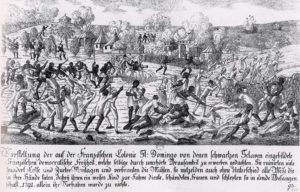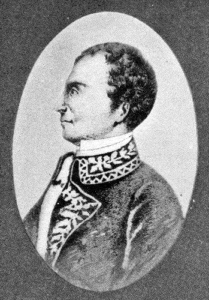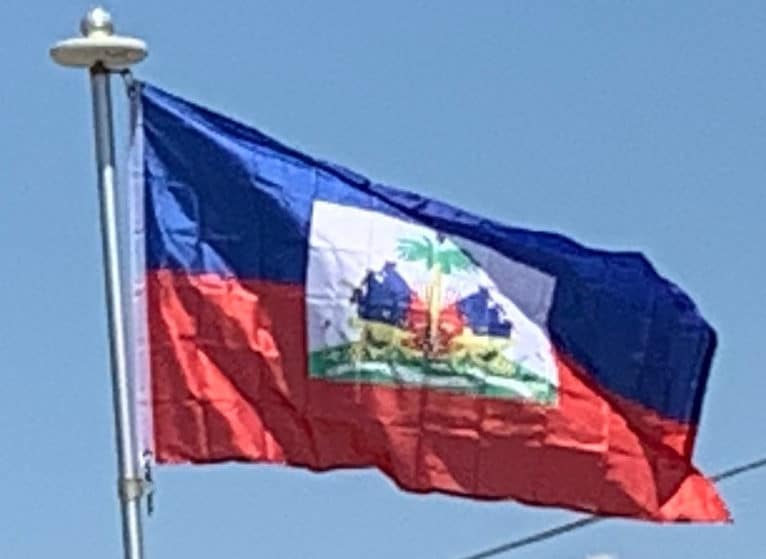The brutality of slave life led many slaves to escape to mountainous regions, where they set up their own autonomous communities and became known as Maroons. One Maroon leader, François Mackandal, led a rebellion in the 1750s, however he was later captured and executed by the French.
Haitian Revolution (1791–1804):
Inspired by the French Revolution of 1789 and principles of the rights of man, the French settlers and free people of color pressed for greater political freedom and more civil rights. Tensions between these two groups led to conflict, as a militia of free-coloreds was set up in 1790 by Vincent Ogé, resulting in his capture, torture and execution. Sensing an opportunity, in August 1791 the first slave armies were established in northern Haiti under the leadership of Toussaint Louverture inspired by the Vodou houngan (priest) Boukman, and backed by the Spanish in Santo Domingo – soon a full-blown slave rebellion had broken out across the entire colony.

In 1792, the French government sent three commissioners with troops to re-establish control; to build an alliance with the gens de couleur and slaves commissioners Léger-Félicité Sonthonax and Étienne Polverel abolished slavery in the colony. Six months later, the National Convention, led by Maximilien de Robespierre and the Jacobins, endorsed abolition and extended it to all the French colonies.
Political leaders in the United States, which was a new republic itself, reacted with ambivalence, at times providing aid to enable planters to put down the revolt. Later in the revolution, the US provided support to native Haitian military forces, with the goal of reducing French influence in North America and the Caribbean.
With slavery abolished, Toussaint Louverture pledged allegiance to France, and he fought off the British and Spanish forces who had taken advantage of the situation and invaded Saint-Domingue. The Spanish were later forced to cede their part of the island to France under the terms of the Peace of Basel in 1795, uniting the island under one government. However an insurgency against French rule broke out in the east, and in the west there was fighting between Louverture’s forces and the free people of color led by André Rigaud in the War of the Knives (1799–1800). Many surviving free people of color left the island as refugees.

After Louverture created a separatist constitution and proclaimed himself governor-general for life, Napoléon Bonaparte in 1802 sent an expedition of 20,000 soldiers and as many sailors under the command of his brother-in-law, Charles Leclerc, to reassert French control. The French achieved some victories, but within a few months most of their army had died from yellow fever. Ultimately more than 50,000 French troops died in an attempt to retake the colony, including 18 generals. The French managed to capture Louverture, transporting him to France for trial. He was imprisoned at Fort de Joux, where he died in 1803 of exposure and possibly tuberculosis.
The slaves, along with free gens de couleur and allies, continued their fight for independence, led by generals Jean-Jacques Dessalines, Alexandre Pétion and Henry Christophe.
